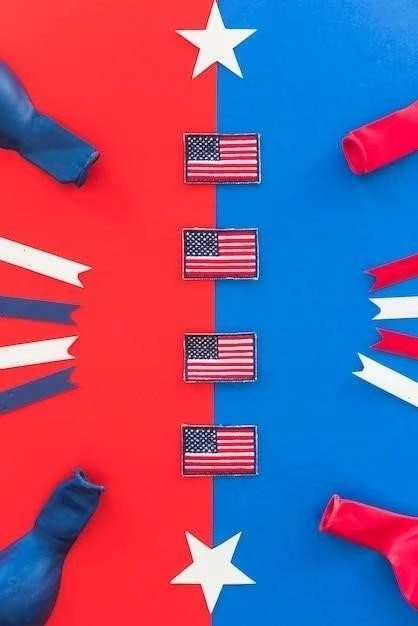A History of Diversity and its Challenges
The United States, a nation founded on principles of freedom and opportunity, has always been characterized by its diversity. From the arrival of indigenous peoples thousands of years ago to the waves of immigrants seeking a better life, the nation’s history is one of continuous cultural exchange and demographic shifts. However, this rich tapestry of diversity has also been interwoven with challenges. The nation has grappled with issues of inclusion, equity, and social justice throughout its existence. From the displacement and mistreatment of Native Americans to the legacy of slavery and segregation, the journey towards a truly equitable society has been marked by struggle and progress.

The Evolving Demographics: A Statistical Overview
The demographic landscape of the United States is in constant flux, reflecting its long history of immigration and evolving social patterns. The 2020 Census, a comprehensive count of the nation’s population, offers a snapshot of these dynamic changes and highlights the increasing diversity that characterizes the country.
As of 2020, the White alone non-Hispanic population constituted the largest racial or ethnic group, comprising 57.8% of the total population. However, this figure reflects a decrease from 63.7% in 2010, indicating a trend of increasing diversification within the U.S. population. The Hispanic or Latino population stands as the fastest-growing demographic group, experiencing an 18.6% surge between 2010 and 2018. This growth is attributed to a combination of factors, including immigration and higher birth rates.
The Black or African American population represents the second-largest racial minority group, accounting for 12.2% of the total population in 2020. The Asian American population follows closely behind, comprising 5.6% of the population. Notably, both the Black and Asian American populations have shown significant growth in recent decades, with Black student enrollment increasing by 26.0% and Asian American representation growing by 27.4% between 2010 and 2018.
The Census data also reveals a significant increase in the multiracial population, reflecting the growing acceptance and visibility of individuals with diverse heritages. The option to select more than one race on census forms, introduced in 2000, has provided a more accurate reflection of the complex racial and ethnic identities within the U.S. The multiracial population has increased by 276% since the 2010 census, highlighting a significant shift in how Americans perceive and identify with their racial backgrounds.
The data also underscores a growing trend of geographic diversity. While certain racial and ethnic groups have historically been concentrated in specific regions, recent years have witnessed increased dispersion across the country. For instance, the Hispanic and Asian American populations are no longer confined to traditional gateways like California or New York but are increasingly establishing communities in the South and Midwest. This geographic diversification contributes to a richer cultural tapestry and presents opportunities for greater intercultural understanding.
Understanding these evolving demographics is crucial for addressing social and economic disparities, ensuring equitable representation, and promoting inclusivity within all spheres of American society. The statistical portrait painted by the Census provides valuable insights into the changing face of the United States and underscores the importance of embracing diversity as a defining strength of the nation.
Racial and Ethnic Makeup: A Shifting Landscape
The United States has always been a nation of diverse origins, shaped by waves of immigration and internal migration patterns. This inherent dynamism is evident in the continuously evolving racial and ethnic landscape of the country. The once largely homogenous population has transformed into a complex tapestry of cultures, ethnicities, and races, redefining the very notion of American identity.
The 2020 Census illuminates this demographic shift, revealing a nation where the non-Hispanic White population, while still constituting the largest single group at 57.8%, is steadily declining as a proportion of the total population. This trend is indicative of a broader societal shift where racial and ethnic minority groups are experiencing significant growth, driven by factors like immigration, birth rates, and increasing identification with multiracial backgrounds.
The Hispanic or Latino population, now the fastest-growing demographic group in the U.S., exemplifies this shift. Comprising 18.5% of the population as of 2020, their influence is felt across various sectors, from economics and politics to culture and language. This growth is fueled by both a younger demographic profile and continued immigration, primarily from Mexico and Central America.
The Black or African American population, representing 12.2% of the total population, holds a unique position in the American narrative. Their history, interwoven with the legacy of slavery and the ongoing struggle for civil rights, remains deeply intertwined with the nation’s identity. Despite persistent socioeconomic disparities, the Black community continues to exert a profound influence on American culture, music, and social discourse.
The Asian American population, at 5.6% of the population, represents a rapidly growing and increasingly diverse group. With origins spanning East Asia, Southeast Asia, and the Indian subcontinent, Asian Americans contribute significantly to the nation’s economic, technological, and cultural landscape. Their experiences, often shaped by immigration policies and cultural assimilation, highlight the ongoing challenges faced by newcomers navigating their place within American society.
The emergence of a more multiracial and multiethnic America presents both opportunities and challenges. While this diversity enriches the nation’s social fabric, fosters innovation, and broadens perspectives, it also necessitates a renewed commitment to addressing persistent disparities in wealth, education, healthcare, and representation. Navigating this evolving landscape requires acknowledging and dismantling systemic barriers while fostering a society where all individuals, regardless of their background, have equal opportunities to thrive.

Cultural Contrasts: A Tapestry of Traditions and Values
The United States, often described as a “melting pot” or a “mosaic” of cultures, thrives on a dynamic interplay of traditions, values, and beliefs. This rich tapestry, woven from the threads of countless heritages, both defines and challenges the nation’s identity. From indigenous communities with deep ties to the land to successive waves of immigrants bringing their unique customs and perspectives, the cultural landscape of the United States is a testament to its history as a destination for those seeking new beginnings and opportunities.
This vibrant diversity manifests in myriad ways, enriching every aspect of American life. Culinary traditions, for instance, showcase the fusion of flavors and techniques from across the globe. From Cajun and Creole cuisine in Louisiana, reflecting French and African influences, to Tex-Mex dishes in the Southwest, blending Mexican and American traditions, food serves as a delicious testament to the nation’s cultural crossroads.
Music, often considered a universal language, further underscores the cultural contrasts and convergences within the United States. From the blues, born out of the African American experience in the South, to jazz, evolving from the melting pot of New Orleans, to hip-hop, emerging from the streets of New York City, American musical genres reflect the diversity of its creators and resonate with audiences worldwide.
Religious practices, too, contribute to the complex cultural tapestry of the nation. While Christianity remains the predominant religion, the United States boasts a growing number of adherents to other faiths, including Islam, Buddhism, Hinduism, and Judaism. This religious pluralism fosters interfaith dialogue, challenging preconceived notions and promoting understanding across different belief systems.
However, this dynamic interplay of cultures also presents challenges. Navigating different communication styles, social norms, and cultural sensitivities can lead to misunderstandings and conflicts. The legacy of historical injustices, rooted in prejudice and discrimination against certain groups, continues to cast a long shadow on the pursuit of true equality.
Addressing these challenges requires fostering intercultural dialogue, promoting empathy and understanding, and celebrating the contributions of all cultures. Education plays a crucial role in dismantling stereotypes, fostering cultural competency, and equipping individuals with the tools to navigate a diverse society with sensitivity and respect. Ultimately, embracing and celebrating the tapestry of traditions and values that constitute the American experience enriches the nation and strengthens its social fabric.
Socioeconomic Disparities: The Gap Between Rich and Poor
Despite being one of the wealthiest nations globally, the United States grapples with a persistent challenge: a significant and widening gap between the rich and the poor. This stark economic disparity, often running along racial and ethnic lines, stands in stark contrast to the nation’s founding ideals of equality and opportunity for all. It underscores a fundamental tension within American society, where the pursuit of the American Dream feels increasingly out of reach for many.
Statistical indicators paint a sobering picture of this divide. Wealth inequality, a measure of the unequal distribution of assets, has reached levels unseen in decades. The top 1% of earners control a disproportionate share of the nation’s wealth, while a significant portion of the population struggles to make ends meet. This concentration of wealth at the top has far-reaching consequences, influencing political power, access to resources, and social mobility.
The racial wealth gap further exacerbates this issue. Decades of discriminatory policies, from housing segregation to unequal access to education and employment opportunities, have created a system where wealth accumulation is significantly more challenging for Black and Hispanic families compared to their White counterparts. This disparity is evident in homeownership rates, access to quality healthcare, and even life expectancy.
The causes of this widening socioeconomic gap are complex and multifaceted. Globalization and technological advancements, while contributing to overall economic growth, have also led to job displacement and wage stagnation for certain segments of the population. A decline in union membership has eroded bargaining power for many workers, while tax policies often favor the wealthy.
The consequences of this widening gap are profound and far-reaching. Rising income inequality is linked to a host of social ills, including increased crime rates, poorer health outcomes, and decreased social mobility. It undermines the social fabric of communities, breeds resentment, and erodes trust in institutions.
Addressing this challenge requires a multi-pronged approach. Investing in quality education and job training programs can equip individuals with the skills needed to compete in the global economy. Strengthening social safety nets, such as affordable healthcare and housing, can provide a crucial buffer for those facing economic hardship. Addressing systemic racism and discrimination in all its forms is essential to creating a level playing field for all Americans. Ultimately, bridging the socioeconomic divide is not only a matter of economic fairness but also a moral imperative, essential for upholding the values upon which the nation was founded.

Political Polarization: A Divided Nation?
The United States, founded on principles of debate and dissent, has always navigated a complex relationship with political differences. However, recent decades have witnessed a concerning trend: a sharp rise in political polarization, straining the very fabric of American democracy. This deep partisan divide, often characterized by animosity and distrust across ideological lines, raises questions about the nation’s ability to address pressing challenges and maintain its role as a beacon of democratic values on the global stage.
This polarization manifests in a variety of ways, from the increasingly hostile rhetoric employed in political discourse to the growing ideological homogeneity within the two major political parties. Political identities have become increasingly intertwined with social and cultural affiliations, leading to a sense of “us vs. them” that permeates public life. This divide is amplified by social media, where echo chambers and filter bubbles reinforce existing beliefs and limit exposure to opposing viewpoints.
Several factors have contributed to this heightened state of polarization. Economic anxieties, fueled by globalization, technological advancements, and growing income inequality, have created a sense of uncertainty and resentment among segments of the population. These anxieties are often exploited by political actors seeking to advance their agendas, further deepening the divides.
Cultural and demographic shifts have also played a role. The increasing diversity of the United States, while enriching its social fabric, has also led to anxieties about cultural change and the meaning of national identity. These anxieties are often manipulated for political gain, exacerbating existing divisions.
The consequences of this polarization are far-reaching and deeply concerning. Gridlock and dysfunction within the political system make it challenging to address critical issues facing the nation, from climate change to healthcare. The erosion of trust in institutions, including government, media, and even science, further undermines the foundation of a healthy democracy.
Addressing this polarization requires a multifaceted approach. Promoting media literacy and critical thinking skills can help individuals navigate the complexities of the information landscape. Encouraging civil discourse and fostering empathy across ideological divides are essential for rebuilding trust and understanding. Political reforms aimed at reducing the influence of money in politics and ensuring fair electoral representation can create a more level playing field and restore faith in the democratic process. Ultimately, bridging the political divide is not about erasing differences but rather about fostering a sense of shared purpose and a commitment to democratic values that transcend partisan interests.

The Future of Diversity: Opportunities and Challenges
As the United States continues its trajectory toward becoming an even more diverse nation, the intersection of its multifaceted population presents both unprecedented opportunities and complex challenges. This dynamic interplay between a nation striving for unity amidst its inherent plurality will shape its future on the global stage, influence its social fabric, and test its commitment to its founding ideals of equality and opportunity for all.
The opportunities stemming from this increasing diversity are manifold. A richer cultural tapestry, fueled by the contributions of individuals from various backgrounds, has the potential to foster innovation, creativity, and economic growth. Diverse perspectives in problem-solving, decision-making, and leadership can lead to more effective and equitable solutions across all sectors of society. Moreover, a society that values and embraces its diversity is well-positioned to navigate the complexities of an interconnected world and build bridges across cultures.
However, realizing these opportunities requires a concerted effort to address the persistent challenges that threaten to undermine the nation’s progress. Systemic racism and discrimination, deeply ingrained in the nation’s history, continue to create barriers to equality in areas such as education, healthcare, housing, and criminal justice. Addressing these systemic issues requires acknowledging their existence, dismantling discriminatory policies and practices, and actively promoting equity and inclusion in all aspects of American life.
Furthermore, the increasing visibility and empowerment of diverse communities have sparked a necessary but often uncomfortable conversation about identity, belonging, and the meaning of being American. Navigating these complex dialogues requires empathy, understanding, and a willingness to engage in respectful and constructive discourse. Educational initiatives that promote cultural competency, historical awareness, and critical thinking skills are essential for fostering a generation equipped to navigate the complexities of a diverse society.
The future of diversity in the United States hinges on the nation’s ability to bridge the divides that threaten its unity. Fostering a sense of shared purpose, promoting economic opportunity for all, and ensuring equal access to justice and representation are crucial steps towards creating a more equitable and just society. The path forward requires a sustained commitment to the ideals of equality and a recognition that the nation’s diversity is not a problem to be solved but a strength to be celebrated and leveraged for the betterment of all.










